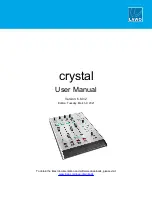
Changing the Hydraulic
Transmission Filters and
Fluid
Service Interval:
After the first 100 hours
Every 250 hours thereafter
Important:
Do not change the hydraulic fluid
(except for what can be drained when changing
filter and removing the drain plugs), unless it
is felt the oil has been contaminated or been
extremely hot.
Changing the oil unnecessarily could damage
hydraulic system by introducing contaminants
into the system.
Draining the Auxiliary Hydraulic
Fluid
1.
Shut off the engine, engage the parking brake,
wait for all moving parts to stop, and remove
the key.
2.
Place a drain pan between the transmissions.
3.
Remove the 2 drain plugs, located at the bottom
of each transmission, and allow the fluid to drain.
4.
Locate the 2 filters under the transmissions
(
).
g268755
Figure 56
1.
Transmission
2.
Filter (transmission)
5.
Carefully clean area around filters.
Important:
Do not allow dirt or contaminants
to enter the hydraulic system.
6.
Remove the filters to and allow the fluid to drain
from the drive system (
7.
Install the 2 drain plugs.
Installing the Transmission Filters
1.
Apply a thin coat of the specified hydraulic fluid
to the rubber seal of the new filters; refer to
Transmission Fluid Specification (page 44)
.
2.
Turn the filter clockwise until rubber seal
contacts the filter adapter, then tighten the filter
an additional 2/3 to 3/4 turn (
).
3.
Remove the vent plug at each transmission.
Adding Transmission Fluid
1.
Remove cap from the expansion tank, add the
specified transmission fluid to the tank until
fluid comes out of the transmission vent, and
install the plug; refer to
Specification (page 44)
and
Transmission Fluid Level (page 44)
.
2.
Repeat step
until fluid comes out of the vent of
the other transmission, and install the plug.
3.
Torque the vent plugs to 180 in-lb (20 N·m).
4.
Continue to adding the specified transmission
fluid until it reaches the FULL COLD line on
the expansion reservoir; refer to
in
Checking the Transmission Fluid Level (page
44)
.
5.
Raise the rear of machine up and support with
jack stands (or equivalent support) just high
enough to allow the drive wheels to turn freely.
CAUTION
Raising the machine for service
or maintenance relying solely on
mechanical or hydraulic jacks could be
dangerous. The mechanical or hydraulic
jacks may not be enough support or may
malfunction allowing the machine to fall,
which could cause injury.
Do not rely solely on mechanical
or hydraulic jacks for support. Use
adequate jack stands or equivalent
support.
6.
Start the engine and move the throttle control
ahead to 1/2 throttle position. Disengage the
parking brake.
45
















































